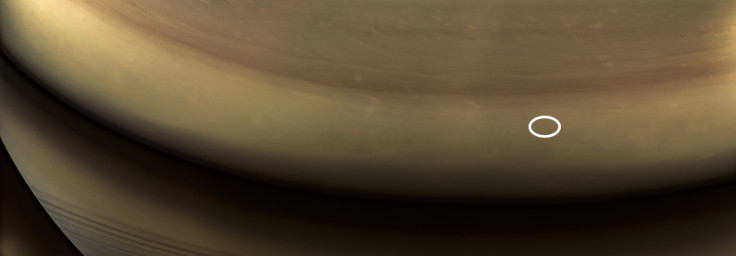The final frontier: This is where Nasa's Cassini spacecraft plunged and burnt into pieces
The orbiter was more than 600,000km away from Saturn when the images for the mosaic were taken.
Nasa has shared a stunning new image that shows the historic site where the Cassini spacecraft ended its 20-year-long mission on Saturn.
On 15 September, 2017, the iconic Nasa spacecraft took a plunge into the ringed planet's atmosphere to burn itself up and disintegrate into pieces. The dramatic but controlled descent not only gave Nasa loads of valuable scientific data but also drew lots of attention.
However, hours before making its death dive, Cassini took a series of images one last time. We have already seen some of those shots, but the latest one is a mosaic pinpointing the exact location of the spacecraft's plunge.

The image shows Saturn's night side, including the entry site or the point the spacecraft used to enter into the ringed planet's upper atmosphere. Though the area is dimly lit by sunlight reflected from Saturn's icy ring particles, the planet had rotated to the day side by the time Cassini closed in, according to Nasa.
The orbiter was more than 600,000km away from Saturn when the images for the mosaic were taken. Also, Nasa used red, green and blue spectral filters to produce the historic photo in near-natural colour.
The Cassini-Huygens mission was a joint project between Nasa, the European Space Agency (ESA) and the Italian Space Agency. The spacecraft took off in 1997 and orbited Saturn from 2004 to September 2017. During this period, it not only took some brilliant shots of the ringed planet but also gathered extremely useful information about its rings and moons.





















